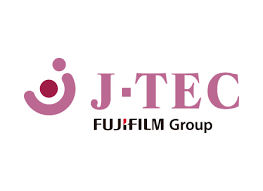预约演示
更新于:2025-05-07
Human (autologous) corneal limbusderived corneal epithelial cell sheet(Japan Tissue Engineering)
更新于:2025-05-07
概要
基本信息
非在研机构- |
权益机构- |
最高研发阶段批准上市 |
首次获批日期 日本 (2020-03-19), |
最高研发阶段(中国)- |
特殊审评- |
登录后查看时间轴
关联
100 项与 Human (autologous) corneal limbusderived corneal epithelial cell sheet(Japan Tissue Engineering) 相关的临床结果
登录后查看更多信息
100 项与 Human (autologous) corneal limbusderived corneal epithelial cell sheet(Japan Tissue Engineering) 相关的转化医学
登录后查看更多信息
100 项与 Human (autologous) corneal limbusderived corneal epithelial cell sheet(Japan Tissue Engineering) 相关的专利(医药)
登录后查看更多信息
1
项与 Human (autologous) corneal limbusderived corneal epithelial cell sheet(Japan Tissue Engineering) 相关的文献(医药)2023-09-01·Photodiagnosis and Photodynamic Therapy
Multi-charged nanoemulsion for photodynamic treatment of glioblastoma cell line in 2D and 3D in vitro models
Article
作者: Gusmão, Luiza Araújo ; Borges, Hiago Salge ; Tedesco, Antonio Claudio
1
项与 Human (autologous) corneal limbusderived corneal epithelial cell sheet(Japan Tissue Engineering) 相关的新闻(医药)2023-08-22
·药明康德
▎药明康德内容团队编辑"我曾经完全失明、头痛欲裂,思考是否还能撑过下一天——真的有想过我可能不能再继续下去了。现在,我的视力恢复到足够开车,并走出了心理阴影,"菲尔·德斯特(Phil Durst)哽咽地描述着自己通过新型干细胞移植手术使眼睛重见光明的经历,所有这一切都让他激动不已。这名现年51岁的男子曾因一场意外失去了视力,在2018年参加了一项创新眼干细胞移植手术的临床试验后成功恢复了视力,奇迹究竟是怎么发生的呢?天降横祸,视力受损难以治疗菲尔·德斯特是一家化学公司的经理。2017年4月,他在为客户上门调试洗碗机时不幸被洗碗机喷出的腐蚀性溶液射中了眼睛。这场天降横祸使他的眼睛受到了严重的伤害,他的眼睛不仅无法忍受光线,还会持续疼痛,连视力也丧失了。除此以外,他每天还要遭受因眼睛损伤引起的4-5次的剧烈头痛。通常来说,眼睛的损伤可以通过角膜移植来治疗。但菲尔的眼睛由于受到严重的腐蚀,用于补充和维持角膜最外层上皮的角膜缘干细胞(LSC)也遭到了破坏,因此,他即使接受了角膜移植手术也无济于事——如果缺少上皮的保护,角膜在受伤后会被疤痕组织覆盖,眼睛依然会失去视力。图片来源:123RF如果想要移植LSC,来源于异体的供体干细胞会引起排斥反应,患者需要长期接受免疫抑制治疗,而来源于患者自身的干细胞尽管不会引起排斥反应,但很难获取到。因为这类移植手术如果想要效果好,通常需要从患者健康的那只眼睛上取出至少4mm的角膜缘用来移植,这可能会使患者原本健康的眼睛也受到损伤。对于菲尔来说,这些方法都不可能用在他身上,因为他的两只眼睛都在事故中受了伤,只是右眼的严重程度比左眼轻一些。尽管家人们曾试图带他出去散散心排解痛苦,但菲尔身体上遭受的折磨依然令他感到无比绝望,曾一度想要轻生。就在他万念俱灰时,一项似乎是为他这类患者量身定制的临床试验开始招募患者了,菲尔决定鼓起勇气尝试一次。一种创新的自体角膜缘上皮细胞移植手术这项临床试验由波士顿Mass Eye and Ear医院的眼科医生Ula Jurkunas博士担任首席研究员,使用的是一种创新的眼干细胞移植手术,旨在利用患者健康眼睛的LSC治疗其受损的眼睛。相比于常规的LSC移植手术,这种利用培养的自体角膜缘上皮细胞(CALEC)进行的移植手术不需要从健康的眼睛中取过多的干细胞——这为菲尔提供了尝试的可能性,他右眼剩余的LSC足够支持手术。▲CALEC的制造和移植过程(图片来源:参考资料[4])在手术前,眼科医生首先会对患者健康的眼睛进行小型的角膜缘活检取出少量的LSC,然后在丹娜-法伯癌症研究所的实验室中利用体外扩增技术获得足够量的LSC,再把这些LSC移植到患者受损的眼睛上。事实上,早在1997年就有一些科学家尝试进行过类似的干细胞培养移植手术,被称为培养的角膜缘上皮移植(CLET)手术。CLET曾成功令两位与菲尔情况类似的、因化学试剂烧伤而引起的单侧眼睛LSC缺乏的患者获得了良好的长期疗效。不过,CLET在培养干细胞的过程中会使用到抗生素和来源于小鼠的细胞促进细胞增殖,这些操作不符合世界卫生组织(WHO)认可的良好生产规范(GMP),因此无法在美国使用。而这次科学家们新开发的CALEC技术则完全规避了这些操作。2018年4月,菲尔成为了美国首例接受CALEC移植手术的受试者,与他参与了同一项临床试验的还有另外4人。见证奇迹,4名患者疗效显著手术台上,医生们既紧张又兴奋地把这项近二十年的研究推向了高潮——真正在患者中评估CALEC移植手术的可行性和安全性。在实验室中分离出来的自体LSC已安全扩增到了人羊膜上等待使用,一切准备工作都已就绪。当医生们小心翼翼地把羊膜覆盖在菲尔和其他患者受损眼睛的表面、等羊膜自己溶解后,剩下的就是期待这些LSC能够在自己的岗位上尽职工作了。首次试验的结果没有令人失望,除了1名患者由于干细胞无法充分扩增而没有进行手术以外,其他4名患者的角膜表面均得到了恢复。其中,有两名患者仅通过干细胞移植就使视力得到了很大的改善,而包括菲尔在内的另外两名患者可以通过后续的人工角膜移植使视力获得进一步的改善。这些研究成果已于近期发表在《科学》杂志子刊Science Advances上。在接受手术后,菲尔表示自己的右眼视力已恢复得完好如初,但受损更严重的左眼视力还是较模糊,他计划在今年9月再接受其他治疗。更多患者有望被惠及由于首个关于CALEC移植手术的临床试验仅纳入了5名患者用于确认其可行性和安全性,亟待在更大规模的临床试验中确认这种手术的有效性。目前,一项纳入了15人的相关概念验证研究正在进行中,预计将于今年年底提交结果。研究人员对该方法寄予了厚望,希望它成为眼睛因化学损伤而受损患者的标准治疗方法。在这项概念研究中,已有1名左眼被烟花灼伤的患者从两次CALEC移植手术中获得了不错的疗效。这名患者名为尼克·卡鲁菲(Nick Kharufeh),曾是一名飞行员。当他于2020年左眼受伤失明后,他不得不放弃了曾经热爱的工作,并陷入了抑郁。现在,尽管他还是无法再次成为一名商业飞行员,但他的视力已恢复到足以支持他驾驶一架小型飞机了。“我真的很感谢他们给了我参加试验的机会,因为这真的帮到了我。”尼克感激地说道,成功的手术让他基本上恢复了正常的生活,并重燃对未来的希望。他不仅期待着今年秋天的新学习课程,还在计划接受第三次手术——更换眼睛的晶状体让眼睛能够聚焦。Jurkunas博士预计,如果CALEC移植手术能够获得批准,仅在美国每年就有望使大约1000名患者从中获益。如果能够将这种疗法标准化,将有望帮助全世界具有此类治疗需求的患者。图片来源:123RF类似的研究在日本也有开展。日本科学家也开发出了符合当地GMP的自体培养的角膜缘上皮细胞片,并在10例单侧眼睛LSC缺乏患者中进行了手术,随后进行了为期2年的随访。该临床试验同样取得了喜人的成果,培养的角膜缘上皮细胞片移植的有效性和安全性得到了证实,相关研究成果已于今年年初发表在Ophthalmology杂志上。 该研究的结果显示,患者术后1年时,10只眼睛中有6只(60%)的角膜上皮重建成功,显著高于异体角膜缘移植15%的临床显著有效率。术后2年的重建成功率为70%。此外,分别有50%和60%的眼睛分别在术后1年和2年得到视力方面的改善。安全性方面,研究人员也未观察到与此类移植相关的重大临床不良事件。目前,这款细胞片产品已在日本作为一种细胞组织类产品获批上市,商品名为Nepic。期待今年年底我们能看到关于CALEC移植手术的概念验证研究的积极数据,在保证疗效和安全性的情况下能够尽快获批,造福更多饱受失明煎熬的患者。大家都在看作为药明康德旗下专注于细胞和基因疗法的CTDMO,药明生基致力于加速和变革基因和细胞治疗及其他高端治疗的开发、测试、生产和商业化。药明生基能够助力全球客户将更多创新疗法早日推向市场,造福病患。如您有相关业务需求,欢迎点击下方图片填写具体信息。▲如您有任何业务需求,请长按扫描上方二维码,或点击文末“阅读原文/Read more”,即可访问业务对接平台,填写业务需求信息▲欲了解更多前沿技术在生物医药产业中的应用,请长按扫描上方二维码,即可访问“药明直播间”,观看相关话题的直播讨论与精彩回放参考资料:[1] An innovative eye stem cell transplant could help restore vision in people with chemical injuries. Retrieved August 21,2023,from https://www.statnews.com/2023/08/18/eye-stem-cell-transplant/[2] Stem cells from one eye show promise in healing injuries in the other. Retrieved August 21,2023,from https://apnews.com/article/blindness-stem-cell-transplant-eyes-b2896563880f2ef9b6eda43263aec095[3] Oie Y, Sugita S, Yokokura S, et al. Clinical Trial of Autologous Cultivated Limbal Epithelial Cell Sheet Transplantation for Patients with Limbal Stem Cell Deficiency. Ophthalmology. 2023;130(6):608-614. doi:10.1016/j.ophtha.2023.01.016[4] Ula V. Jurkunas et al. ,Cultivated autologous limbal epithelial cell (CALEC) transplantation: Development of manufacturing process and clinical evaluation of feasibility and safety.Sci. Adv.9,eadg6470(2023).DOI:10.1126/sciadv.adg6470免责声明:药明康德内容团队专注介绍全球生物医药健康研究进展。本文仅作信息交流之目的,文中观点不代表药明康德立场,亦不代表药明康德支持或反对文中观点。本文也不是治疗方案推荐。如需获得治疗方案指导,请前往正规医院就诊。版权说明:本文来自药明康德内容团队,欢迎个人转发至朋友圈,谢绝媒体或机构未经授权以任何形式转载至其他平台。转载授权请在「药明康德」微信公众号回复“转载”,获取转载须知。分享,点赞,在看,聚焦全球生物医药健康创新
临床研究
100 项与 Human (autologous) corneal limbusderived corneal epithelial cell sheet(Japan Tissue Engineering) 相关的药物交易
登录后查看更多信息
研发状态
10 条最早获批的记录, 后查看更多信息
登录
| 适应症 | 国家/地区 | 公司 | 日期 |
|---|---|---|---|
| 角膜疾病 | 日本 | 2020-03-19 |
登录后查看更多信息
临床结果
临床结果
适应症
分期
评价
查看全部结果
| 研究 | 分期 | 人群特征 | 评价人数 | 分组 | 结果 | 评价 | 发布日期 |
|---|
No Data | |||||||
登录后查看更多信息
转化医学
使用我们的转化医学数据加速您的研究。
登录
或

药物交易
使用我们的药物交易数据加速您的研究。
登录
或

核心专利
使用我们的核心专利数据促进您的研究。
登录
或

临床分析
紧跟全球注册中心的最新临床试验。
登录
或

批准
利用最新的监管批准信息加速您的研究。
登录
或

特殊审评
只需点击几下即可了解关键药物信息。
登录
或

生物医药百科问答
全新生物医药AI Agent 覆盖科研全链路,让突破性发现快人一步
立即开始免费试用!
智慧芽新药情报库是智慧芽专为生命科学人士构建的基于AI的创新药情报平台,助您全方位提升您的研发与决策效率。
立即开始数据试用!
智慧芽新药库数据也通过智慧芽数据服务平台,以API或者数据包形式对外开放,助您更加充分利用智慧芽新药情报信息。
生物序列数据库
生物药研发创新
免费使用
化学结构数据库
小分子化药研发创新
免费使用
